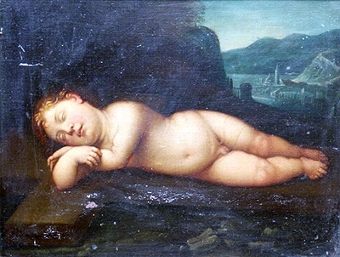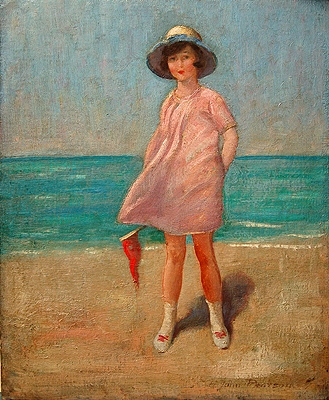a view near ullswater, cumbria
- View other items in:
- antiques interior design modern and vintage
- other interior design
artware ltd
Enquire about this antique
Artware Ltd has 565 antiques for sale.
click here to see them all
Ullswater is the second largest lake in the English Lake District, being approximately nine miles (14.5 kilometres) long and 0.75 miles (1,200 m) wide with a maximum depth of slightly more than 60 metres (197 ft).
Ullswater from Seldom Seen in Glencoynedale.
For much of its length Ullswater forms the border between the ancient counties of Cumberland and Westmorland.The origin of the name ''Ullswater'' is uncertain. Some say it comes from the name of a Nordic chief ''Ulf'' who ruled over the area; there was also a Saxon Lord of Greystoke called ''Ulphus'' whose land bordered the lake. The lake may have been named Ulf''s Water in honour of either of these, or it may be named after the Norse god Ullr. Hodgson Hill, an earthwork on the northeast shoreline of Lake Ullswater may be the remains of a Viking fortified settlement. The village of Glenridding, situated at the southern end of the lake, is popular with tourists of all kinds but especially with mountain walkers, who can scale England''s third highest mountain, Helvellyn, and many other challenging peaks from there. The village has ample accommodation including two Youth Hostels and camp sites. The village of Pooley Bridge is at the northern extremity of the lake. Its narrow 16th-century bridge straddles the River Eamont as it flows out of Ullswater; it is overlooked by Dunmallard Hill, which was the site of an Iron Age fort. Ullswater''s attractions include the Ullswater ''Steamers'' which offer trips around the lake calling at Pooley Bridge, Glenridding and Howtown. The ''Steamers'' operate all year round and were originally working boats which from the 1850s moved mail, workers and goods to and from the Greenside lead mine at Glenridding, which closed in 1962. Today there are four ''Steamers'' plying the waters of Ullswater: Raven, Lady of the Lake, Lady Dorothy and, since April 2007, Lady Wakefield. All the boats are now powered by diesel, with the two oldest, Lady of the Lake and Raven, having been converted from steam in the 1930s. People often catch the ''Steamer'' from Glenridding to Howtown and then return on foot along the lake shore to complete one of the most popular and scenic low-level walks in the Lake District. Ullswater is very popular as a sailing location, with sailing marinas situated around the lake. At weekends especially, the lake is dotted with many yachts but there are facilities also for diving, rowing and motorboats. Another of Ullswater''s attractions is the spectacular waterfall of Aira Force midway along the lake on the western side. (Ullswater lies partly within the National Trust''s Ullswater and Aira Force property.) Close to the falls is Lyulph''s Tower, a pele tower or castellated building built by a former Duke of Norfolk as a shooting box. Just south of Pooley Bridge on the lake''s eastern shore is Eusemere, where anti-slavery campaigner Thomas Clarkson (1760?1846) lived; the house gives one of the best views of the lower reach of Ullswater. William and Dorothy Wordsworth were friends of Clarkson and visited on many occasions. After visiting Clarkson in April 1802, Wordsworth was inspired to write the poem "Daffodils" after seeing daffodils growing on the shores of Ullswater on his journey back to Grasmere. Wordsworth once wrote of Ullswater: "it is the happiest combination of beauty and grandeur, which any of the lakes affords".
Antiques.co.uk Ref: 2ABRFJRW
- Materials:
- Pencil and Watercolour
Artware Ltd
Artware Fine Art specialises in fine antique, decorative and historical portraits and topographical pictures . We cover a period from the 17th and 18th centuries through to the 19th & 20th Centuries. We have over 150 portraits in stock, which can be viewed on our web site, each historical portrait has well researched biographical information both on the sitter and the artist.
Contact details
18 La gare
51 Surrey row
London
Greater London
SE1 0BZ
UNITED KINGDOM
T: 0207 921 97904
E: greg@artwarefineart.com
W: www.artwarefineart.com














